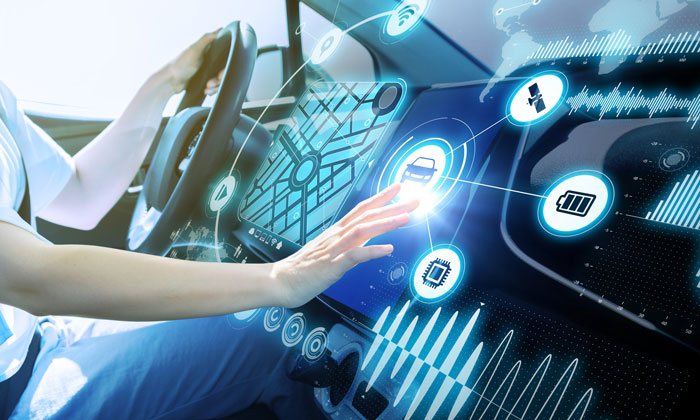It’s no secret that we are increasingly addicted to and dependent on technology in the present day. We are constantly encountering and using new technologies. Many of the technologies we are familiar with and use almost every day were once almost impossible dreams or mere fantasies just 20-25 years ago. As the times progress, technology continues to advance and will keep doing so.
So, there is no certainty that the technologies we cannot even imagine today will not emerge and become widely used in the future. In this post, let’s explore how much technology might advance by the year 2030 and what new technologies we might see in the next 10-12 years.
Robots Will Be More Advanced, Powerful, and Intelligent
The term “robot” is already quite familiar to all of us. The truth is, we don’t have to wait until 2030 to use robots; we are already employing them in various tasks. Robots have become so popular and accessible in our world that we often have to prove “I am not a robot” before visiting certain websites. Currently, the robots we use are relatively low-powered. In the future, the robots we use could be significantly more capable than the ones we have today. A fully human-like robot is still a concept of imagination.
The robots we use now, while able to perform more tasks than humans, are far from being human-like. In factories and production facilities, various types of powerful robots are employed for heavy-duty tasks or product creation, but they are not comparable to human beings.
However, by 2030, we might see robots that can perform many more tasks in less time and with greater power. These robots could exhibit human-like movements and behaviors, and while they may not be identical to humans, they could possess intelligence close to human levels. The ability to make decisions independently and act upon them will be crucial for advanced robots. By utilizing artificial intelligence, these robots could become quite similar to humans in functionality.
The expansion of driverless cars will occur, car-sharing is expected to significantly increase compared to privately owned vehicles.
The concept of driverless cars is not a recent development. It has been in people’s minds for a long time, and the implementation of this concept has already begun. However, driverless cars are still relatively rare on the roads today. While they are not completely absent, there are only a limited number of them currently in use. The implementation of driverless cars has been made possible through Auto Pilot sensors, with Tesla being a notable example of a driverless car.
However, to be honest, the current driverless cars are not entirely perfect, and fully autonomous vehicles are not yet widely accessible. Nevertheless, it is anticipated that by 2030, driverless cars will become more refined, reliable, and accessible. In the next 10 years, we are likely to see more driverless cars on the roads compared to traditional vehicles. This shift will make transportation and daily life significantly easier and more orderly. Additionally, online taxi services like Uber and Ola will expand further, and people will become increasingly reliant on them. By 2030, people are expected to rely more on car-sharing services rather than private cars, and online car-sharing services will see considerable growth.
Smartphones Will Become More Advanced and Feature-Packed
The smartphones we are familiar with and currently use are already quite advanced. Just a few years ago, the features available in these smartphones would have seemed like science fiction. Every year, new and unique features are added to smartphones, such as artificial intelligence, powerful new processors, sensors, and displays. It is expected that in the next 10 years, the most significant advancements will be in the smartphones we hold in our hands.
Just last week, a company called RED released a new smartphone that they claim is the world’s first fully holographic smartphone. Such features would have seemed like a dream just 5 years ago. This is how smartphones are evolving year by year, and this trend will continue. In another 10 years, high-tech holographic smartphones may become more accessible and widely used. Additionally, we can expect to see many new and innovative features in smartphones over the next 10-12 years.
The Internet Will Become Faster and More Reliable
The internet speeds we use today were almost unimaginable just 10 years ago. We have progressed from 1G to 2G, then 3G, and now 4G is available in many countries around the world. Since the inception of the internet, there have been unprecedented changes and advancements in global internet infrastructure. Many researchers believe that by 2014, the internet will become as fundamental to human needs and rights as basic necessities. Furthermore, in the coming years, the internet will become significantly faster. Some countries are already planning for 5G internet. It is expected that by 2030, we will be using 5G internet, which will offer extraordinarily high speeds.
More Advanced Technology Will Be Used in Medicine
The technology currently used in the medical field is already quite sophisticated, but we are still lagging behind other areas in terms of technological advancements in medicine. By 2024, we can expect to see a broader range of advanced technologies in healthcare. Technologies such as 3D printing and other cutting-edge innovations will be utilized for procedures like heart surgery and organ transplants.
Many New Sensors Will Be Developed
We are all somewhat familiar with sensors. Almost every smart device today includes various types of sensors. For example, smartphones, laptops, and tablets have light sensors, gravity sensors, and so on, while fitness bands and smartwatches include compass sensors and heart rate sensors. Without sensors, smart devices would be nearly useless. The sensors currently available are not sufficient. To make our lives easier and to advance technology further, we need more innovative sensors that allow us to perform tasks more easily and automatically.
According to researchers, around 1 billion new sensors could be developed and operational within the next 10 years. These sensors could be integrated into everything from our smartphones to all types of devices, and even into our clothing such as shirts and pants. In the distant future, it is even possible that sensors could be created to collect data from our brains and automatically control our devices.
Artificial Intelligence Will Become More Powerful and Intelligent
Most of us are familiar with the term Artificial Intelligence (AI). It functions as the brain of a computer, working somewhat like the human brain. Through AI, electronic devices can operate autonomously. These devices have the ability to learn from past mistakes and make decisions on their own, much like the human brain. This aspect of AI can be observed in personal assistants like Google Assistant, Siri, or Cortana.
In the next 10 years, AI is expected to become even more intelligent and powerful. Researchers believe that by 2026, AI will be present among the corporate boards of various companies.
Note: The discussion of all types of technologies or devices here is purely speculative. There is no certainty that these technologies will arrive by 2030, or if they will ever come to fruition.




